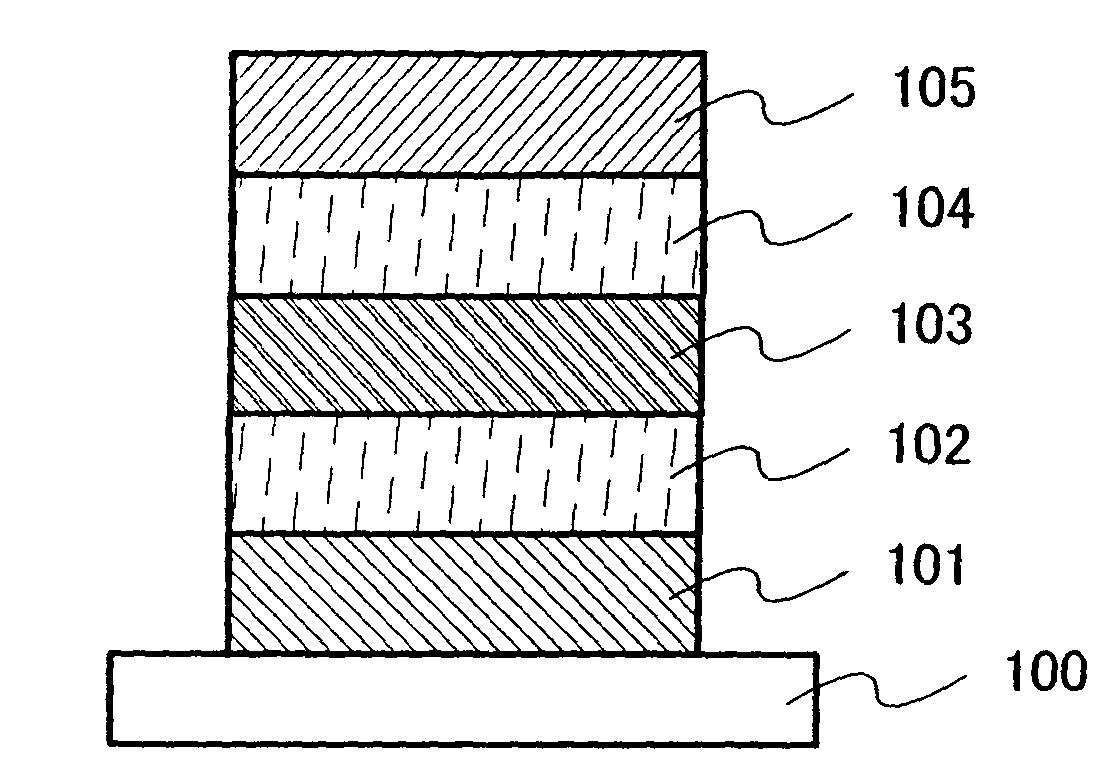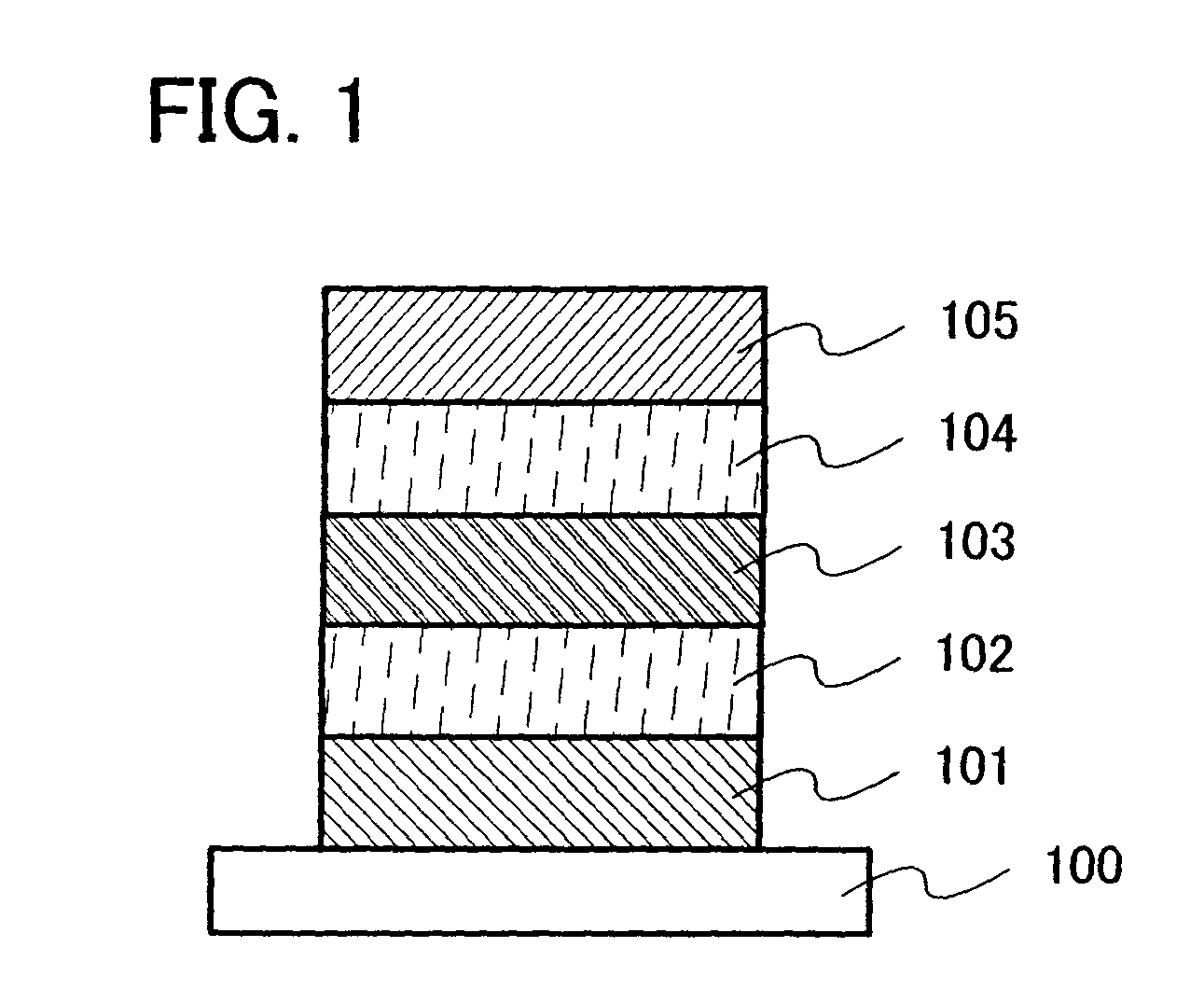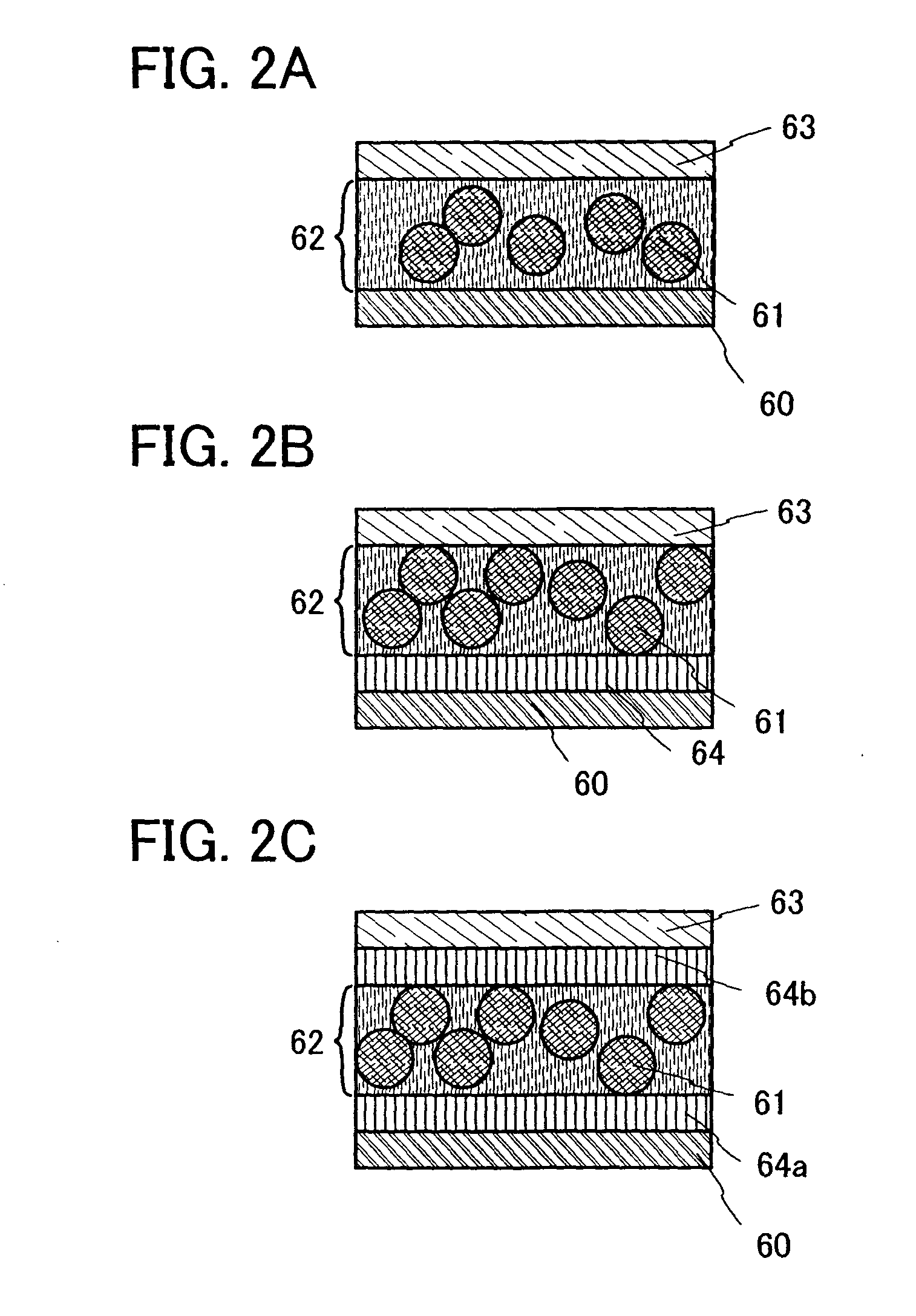Light-emitting material, light emitting-element, light-emitting device, electronic device, and method for manufacturing thereof
- Summary
- Abstract
- Description
- Claims
- Application Information
AI Technical Summary
Benefits of technology
Problems solved by technology
Method used
Image
Examples
embodiment mode 1
[0038]This embodiment mode will describe a light-emitting material for manufacturing a light-emitting element with high luminance. Note that the light-emitting material of this embodiment mode is a material that includes a base material, an element to be a luminescent center, and a compound including at least gallium and manganese.
[0039]As a base material used for the light-emitting material, sulfide, oxide, or nitride can be used. As sulfide, zinc sulfide, cadmium sulfide, calcium sulfide, yttrium sulfide, gallium sulfide, strontium sulfide, barium sulfide, or the like can be used, for example. As oxide, for example, zinc oxide, yttrium oxide, or the like can be used. As nitride, for example, aluminum nitride, gallium nitride, indium nitride, or the like can be used. Further, zinc selenide, zinc telluride, or the like, or ternary mixed crystals such as calcium gallium sulfide, strontium gallium sulfide, or barium gallium sulfide may be used.
[0040]As a luminescent center material in...
embodiment mode 2
[0054]This embodiment mode will describe a light-emitting element formed using the material described in Embodiment Mode 1, with reference to FIG. 1. Note that in this embodiment mode, a thin-film light-emitting element is described.
[0055]A light-emitting element described in this embodiment mode has a structure where, as shown in FIG. 1, a first electrode 101 and a second electrode 105 are provided over a substrate 100, a light-emitting layer 103 is provided between the first electrode 101 and the second electrode 105, a first dielectric layer 102 is provided between the first electrode 101 and the light-emitting layer 103, and a second dielectric layer 104 is provided between the light-emitting layer 103 and the second electrode 105. Note that the structure of the light-emitting element is not limited to the one shown in FIG. 1, and a structure having only one of the first dielectric layer 102 and the second dielectric layer 104 may be employed. In this embodiment mode, descriptio...
embodiment mode 3
[0066]This embodiment mode will describe a structure of a dispersion-type light-emitting element formed using the material described in Embodiment Mode 1.
[0067]In the case of a dispersion-type light-emitting element, a film-form light-emitting layer is formed by dispersing particles of a light-emitting material into a binder. When particles with a desired size cannot be obtained depending on a method for forming a light-emitting material, the material may be processed into particulate forms by being ground in a mortar or the like. A binder is a substance for fixing particles of the light-emitting material in a dispersed state and holding the light-emitting material in a shape as a light-emitting layer. The particles of the light-emitting material are uniformly dispersed and fixed in the light-emitting layer with the binder.
[0068]In the case of a dispersion-type light-emitting element, a light-emitting layer can be formed by a droplet discharge method by which a light-emitting layer ...
PUM
 Login to View More
Login to View More Abstract
Description
Claims
Application Information
 Login to View More
Login to View More - R&D
- Intellectual Property
- Life Sciences
- Materials
- Tech Scout
- Unparalleled Data Quality
- Higher Quality Content
- 60% Fewer Hallucinations
Browse by: Latest US Patents, China's latest patents, Technical Efficacy Thesaurus, Application Domain, Technology Topic, Popular Technical Reports.
© 2025 PatSnap. All rights reserved.Legal|Privacy policy|Modern Slavery Act Transparency Statement|Sitemap|About US| Contact US: help@patsnap.com



